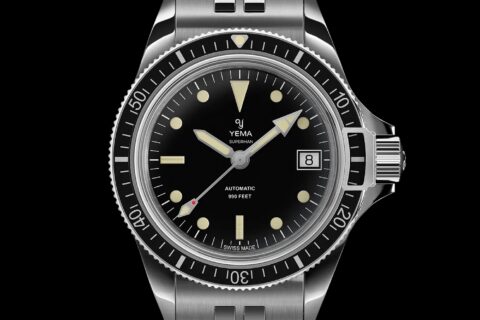Louis Moinet dropped the NEW 1816 Chronograph
A Contemporary Tribute to a Timeless Legacy

The NEW Louis Moinet 1816 chronograph reinterprets over 200 years of horological mastery through a bold, contemporary lens. Designed with purpose and precision, this timepiece honors its functional, avant-garde origins while embracing the codes of haute horlogerie.
Titanium Case, Historic Design

Crafted from grade 5 titanium, the 40.6mm case features 51 components in a Directoire-style semi-bassine silhouette. The winding crown, adorned with a fleur-de-lys referencing Moinet’s birthplace, sits between two minimalist push-pieces. Polished and satin finishes accentuate the case’s refined balance and wearability.
Dial with Heritage and Clarity
The slightly domed dial offers legibility and structure, with a central chronograph hand, hour and minute totalizers, and a small seconds subdial. A segmented minute/seconds track, inspired by the original sixtieths-of-a-second display, frames the layout.

Counters for small seconds and 30-minute totals flank the center, while a 12-hour totalizer rests below. Each subdial features satin-brushed annular rings with bold numerals. The scale includes ten blackened nickel cabochons for added precision.
The dial also bears “1816” and “Louis Moinet” engravings in historic typography. Blued-steel chronograph hands, openworked SLN-coated hour markers, and a rhodium backdrop ensure exceptional contrast. Mounted with four blued screws, the 23-component dial stays faithful to its origin.
Bracelet and Movement Breakthroughs
For the first time, Louis Moinet’s atelier created a metallic bracelet, fully integrated into the case. Its sculptural titanium links, finished in satin and polish, move fluidly with the wrist.
Inside beats a custom in-house calibre with 330 components and 34 jewels, running at 28,800 vibrations/hour. Its open design reveals bridges, cogs, blued screws, and ruby jewels, all in striking contrast.
Precision Engineering at Its Core

A column wheel, introduced in 1862, governs the chronograph’s phases with triangular-tooth accuracy. The swan-neck regulator, patented in 1867, allows fine rate adjustment via a curved spring and micrometer screw.
Finally, the instantaneous minute counter jumps sharply at each full minute for error-free reading, while the hour counter progresses traditionally.
A Legacy Worn on the Wrist
More than a watch, the 1816 chronograph is a wearable expression of heritage, artistry, and innovation—inviting connoisseurs to connect with centuries of timekeeping excellence.
Due to the unpredictable and volatile market on certain Rolex, Patek Philippe and Audemars Piguet watches, prices are subject to change.

